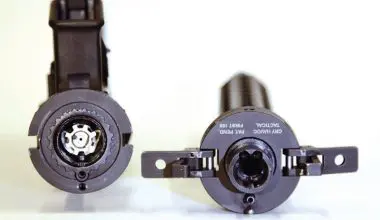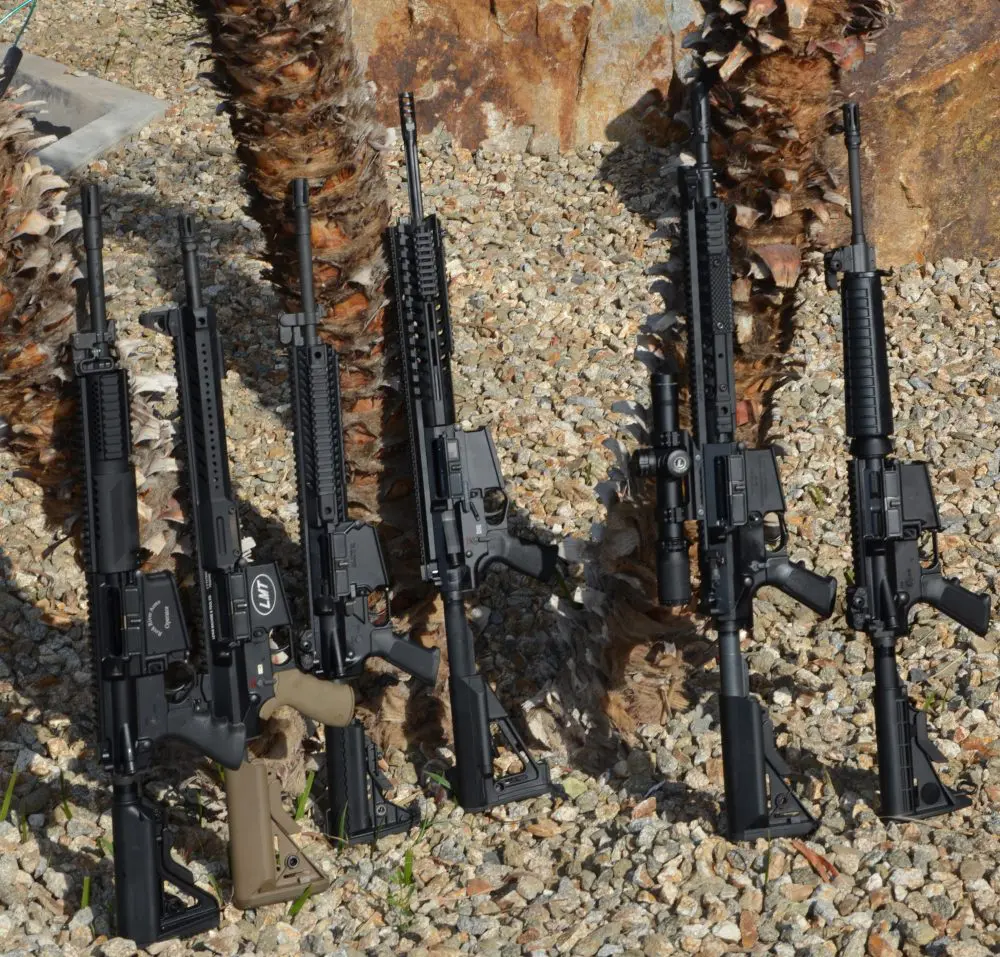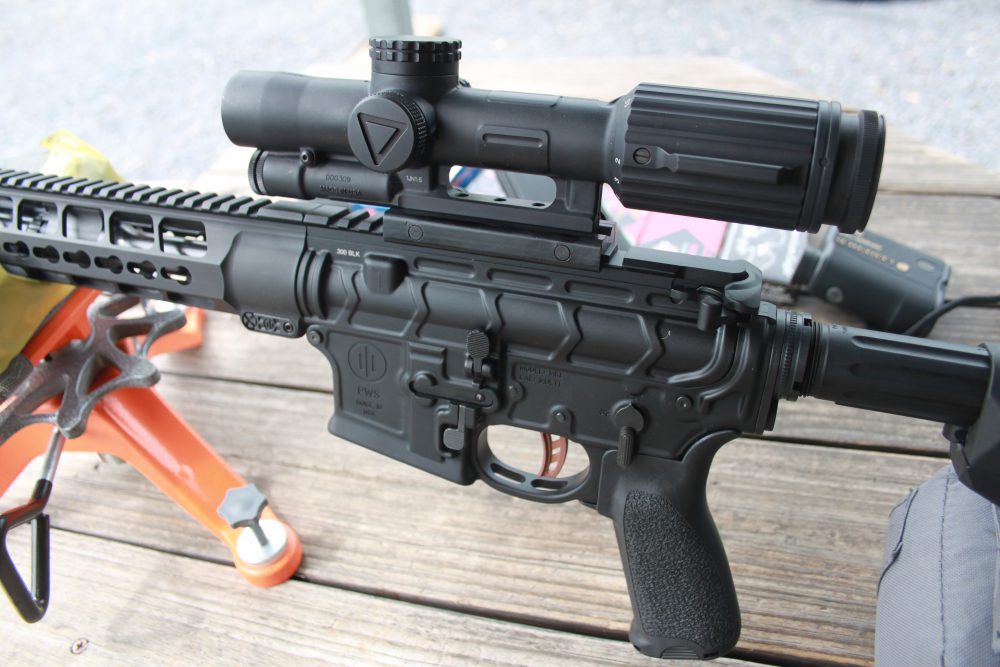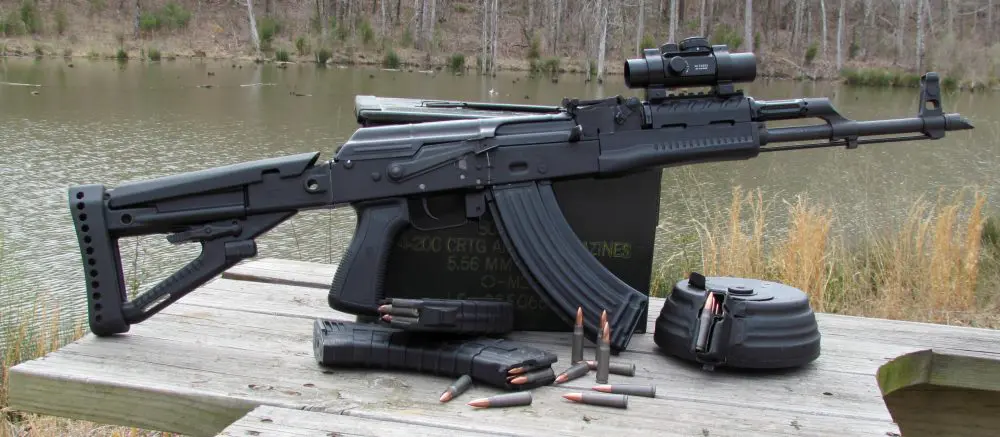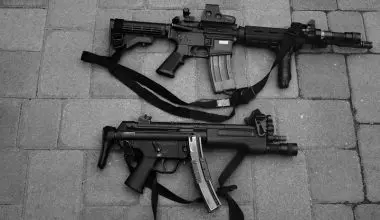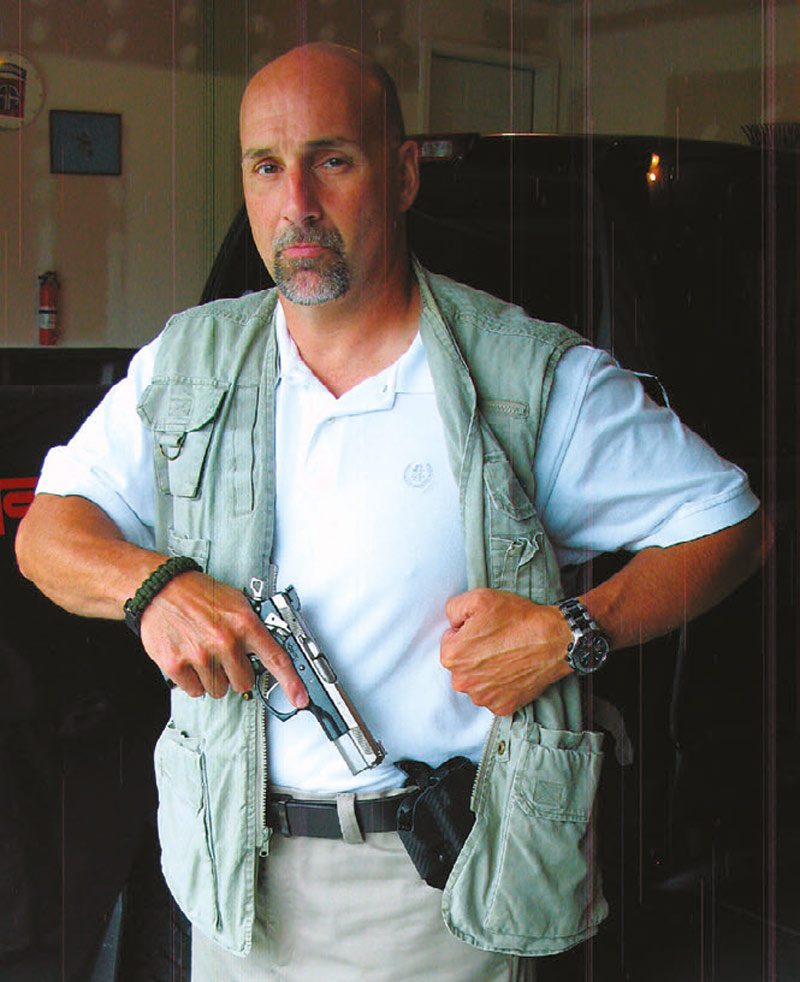
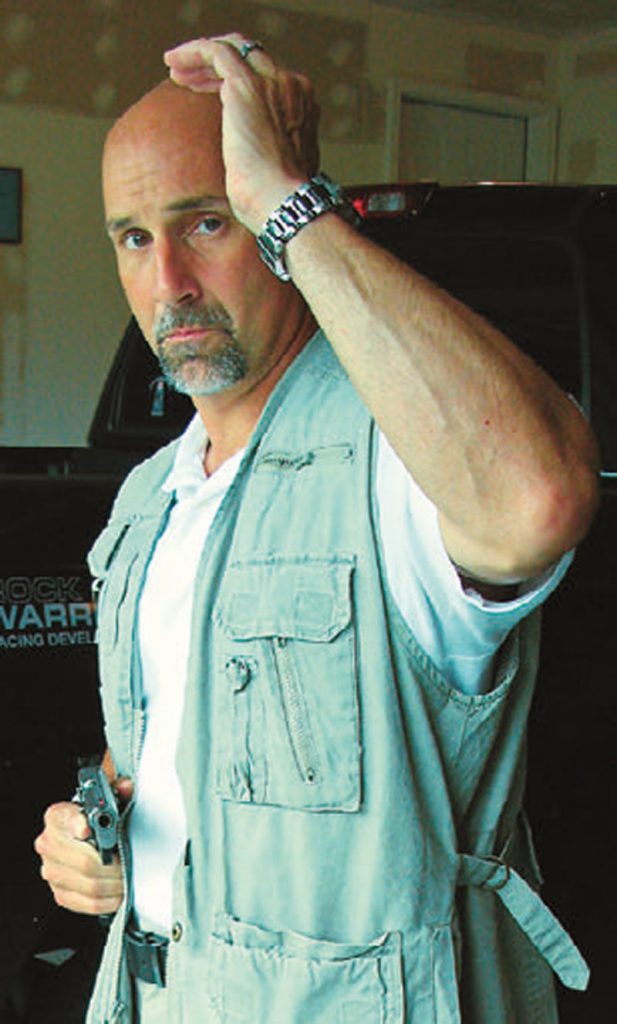
Crossdraw (CD) or support-side carry was verboten in the FBI and, when a CD student showed up at a private-sector shooting course, he was eyed with suspicion and concern and moved to the far end of the line to avoid safety violations caused by his muzzle sweeping a fellow student on the line or breaking the 180 rule. Crossdraw in crowds was considered unsafe and subject to relatively easy gun takeaways.
Table of Contents
REVOLVERS AND SABERS
Historically, as firearms began to mature, Crossdraw was the preferred method of handgun carry, and the 1861 Army Manual of Arms for Sharps Rifle, Colt Revolver and Swords, specified that the “pistol” should be worn on the left side in front of the saber-hook. If necessary, the trooper could draw with his support hand from his CD rig and execute the Cavalry Draw or reverse draw.
In 19th century militaries, southpaws were often forced to shoot and wield swords right handed. As an alternative, troopers also carried the flap-holstered sidearm butt forward on their dominant side and executed the aforementioned Cavalry Draw, which left the saber side unencumbered.
James Butler “Wild Bill” Hickok, one of the most noted gunfighters of the old West, carried his favorite pair of Colt 1851 Navy Model revolvers crossdraw.
CROSSDRAW PERSISTS
When I was in the Marine Corps, sidearms, with the exception of the Tanker shoulder or chest holster, were normally holstered and carried on one’s strong or dominant side in leather or synthetic flap holsters. As mentioned, this was not always the case historically and, sometime after World War I, American military pistols and revolvers began to migrate to the soldier’s strong side. The British and Germans continued to favor CD rigs.
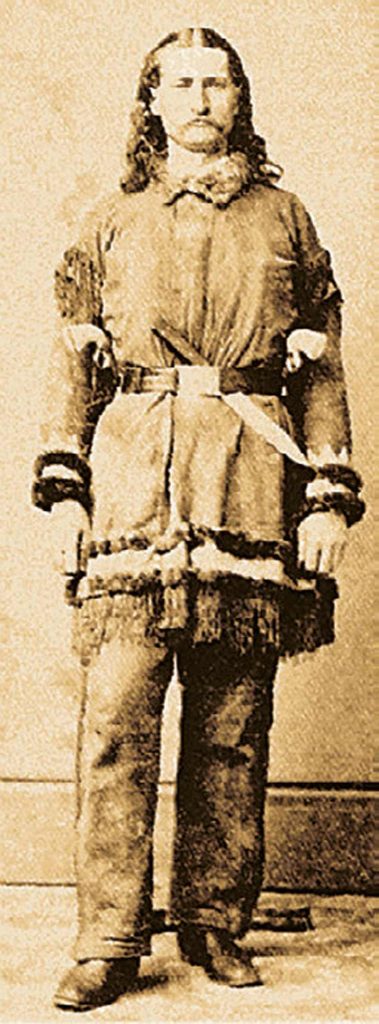
Many U.S. police departments and highway patrol officers placed their flap holsters on their offside, particularly if they spent the majority of the job in a vehicle. In the 1980s, I attended a conference hosted by the Michigan State Police. Highly polished CD situated leather flap holsters protected their revolvers.
ADVANTAGES OF CROSSDRAW
While driving, flying or seated, in general it is much easier to access a sidearm from the Crossdraw position. While driving, CD avoids the seat-belt lock and places the firearm as far away as possible from a front-seat passenger, making a gun takeaway more difficult. More and more assaults are occurring in medical facilities, and CD is most suitable for doctors as well as businessmen seated behind desks.
Standing or sitting, Crossdraw is more subtle, and the shoulder does not have to be raised as it does for a strong-side draw, which telegraphs the move. CD is ideal for air marshals and armed pilots.
Persons with rotator cuff or shoulder injuries do not have to involve the shoulder as much as is required to execute a strong-side draw.
Concealment is a tossup. The butt of the weapon prints against the coat with a strong-side draw location, especially when bending over or reaching forward, and it can clunk against a hard-backed bench. A CD carried gun does not print or make noise when performing these motions.
In crowded areas and at extreme close quarters, the concealed CD is easier to access.
A person carrying CD can still reach and extract the handgun from a rear bear hug. It is possible to fire and hit by turning the body.
During dynamic movement, the dominant hand may be required to perform offensive or defensive tasks, and the support hand can stabilize the holster and retain the handgun, especially in holsters with limited retention levels.
Cold-weather environments may dictate Crossdraw carry via a shoulder holster under a bulky coat.
Hand position: During field interviews, plainclothes officers may have their hands clasped at sternum level or holding jacket lapels. From these non-threatening positions, CD may be more convenient and possibly faster than strong-side draw. From a folded-arm position, you can have your hand discreetly on your piece without brandishing or telegraphing, and cut your draw time in half.
Carrying a backup gun or immobilizing weapon on the support side permits dominant-hand access to both primary and secondary armament.
DISADVANTAGES
In Cross Draw, the muzzle of the handgun is constantly oriented toward persons on the gunman’s support side, violating the 180-degree rule. When drawn, the gun’s muzzle sweeps persons located on the shooter’s support side. This safety issue can be mitigated with a straight drop holster and by blading toward the threat.
The pistol is more accessible to an opponent. Gunmen employing CD must be proficient in defensive tactics and gun retention. I would not carry CD unless I employed at least a Level I security holster.
When drawing, the muzzle is not oriented immediately toward the threat. It must be swung into alignment and a gunman could swing past the target unless the offside is bladed toward the threat. This is mitigated if a straight drop CD holster is employed, the body bladed, and the draw is across the body toward the strong-side hip.
The gun arm is easily pinned against the front torso, preventing draw.
The CD butt is more exposed when the coat is open and more difficult to conceal, especially when the gun’s butt is angled forward.
Obese people may not be able to access a CD-mounted weapon.
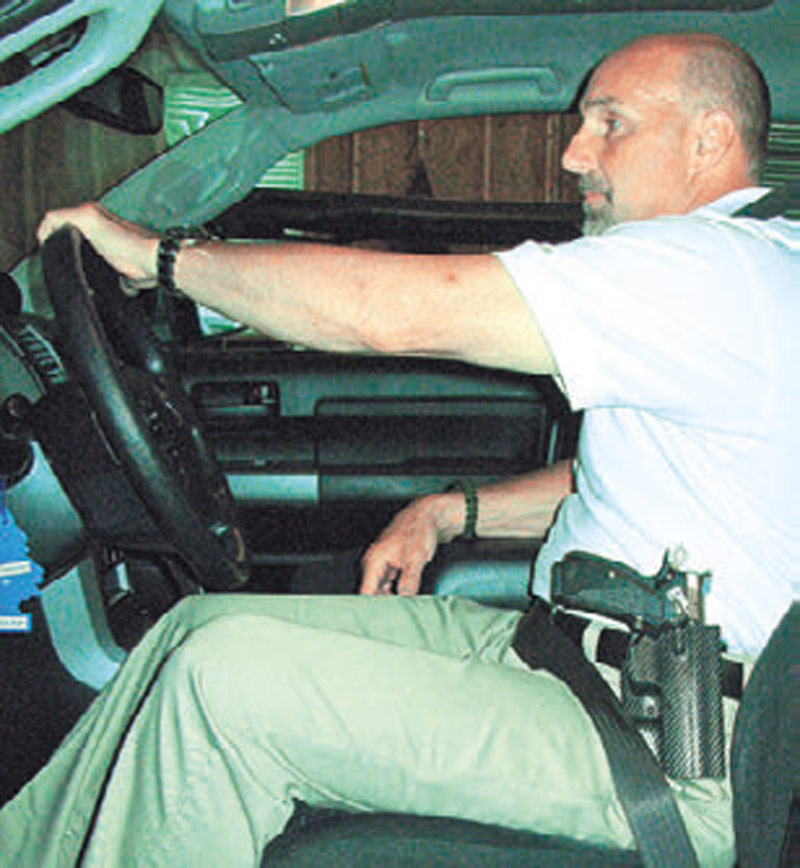
REMEDIES
During his interview with me on crossdraw (see page 73), Massad Ayoob proffered remedies to mitigate the main problems attributed to CD and recommends employing a straight drop or less acutely angled rig, blading the body by dropping your strong-side foot to the rear, and angling your support side toward the threat (fighting stance).
This will orient the CD gun’s barrel toward the threat and will not sweep innocent bystanders. As with any defensive situation, try to maintain your personal body space and not let your opponent penetrate it.
DRAW SEQUENCE
Mas also stipulated that proper and safe practice is mandatory and describes the CD in the following five-step sequence:
- Step back with the dominant-side foot and blade the body as one would with the Weaver stance. This orients the CD’s gun barrel toward the threat. This stance can also be accomplished by stepping forward with the support-side foot into a boxing stance.
- As you access the gun’s butt with your dominant hand, raise your support hand to defend or open the concealing garment. This keeps your support arm from being swept by the gun’s muzzle.
- Release any security system and draw the gun across your torso toward your dominant side until the muzzle indexes the threat. No lateral sweep should result and the gun should travel up and out toward the threat. The trigger finger contacts the trigger when the muzzle indexes the target.
- One- or two-handed, lift and punch the gun toward the threat. Upper body can remain bladed (Weaver) or square up to the threat (Isosceles) by bringing the rear foot forward.
- A two-handed hold is established if there is time to do so.
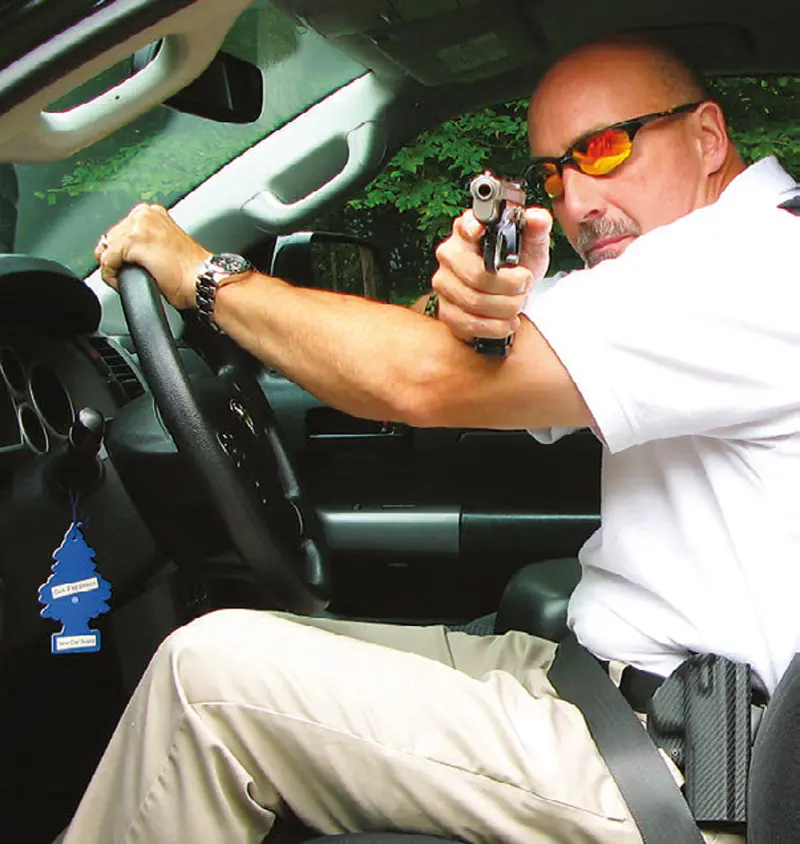
PROLIFIC RIGS
Most strong-side holsters can be shifted to the support side and serve as CD rigs, especially those that can be adjusted for cant/rake. But there are almost as many CD-specific holsters as there are holster manufacturers in business. There are some beautiful examples in rich leather and slick Kydex, but unfortunately, a number of these are open top with no security mechanism other than glove-like fit and tension screws.
To mitigate one of the major criticisms of vulnerability to gun takeaways, I am only recommending those holsters with at least Level I security. The only drawback to these security systems is they may make the Cavalry Draw more difficult to execute. Generally, dedicated CDs ride a little higher than strong-side scabbards and present the gun’s butt at a straight up or forward angle.
Active Pro Gear
Active Pro Gear (APG) makes a variety of high-quality concealed-carry holsters in synthetics and leather. Its Level I thumb-break security M10-G42 steer-hide rig is specifically designed for CD while driving or seated. It snaps on and off a belt and is situated between the hip and navel. Its angle of cant is ideal for cross-body withdrawal.
Blackhawk
Blackhawk’s SERPA is an excellent choice for CD because of its security and generous degree of rake adjustment. Smaller guns can be brought forward between hip and navel and not dig into the thigh.
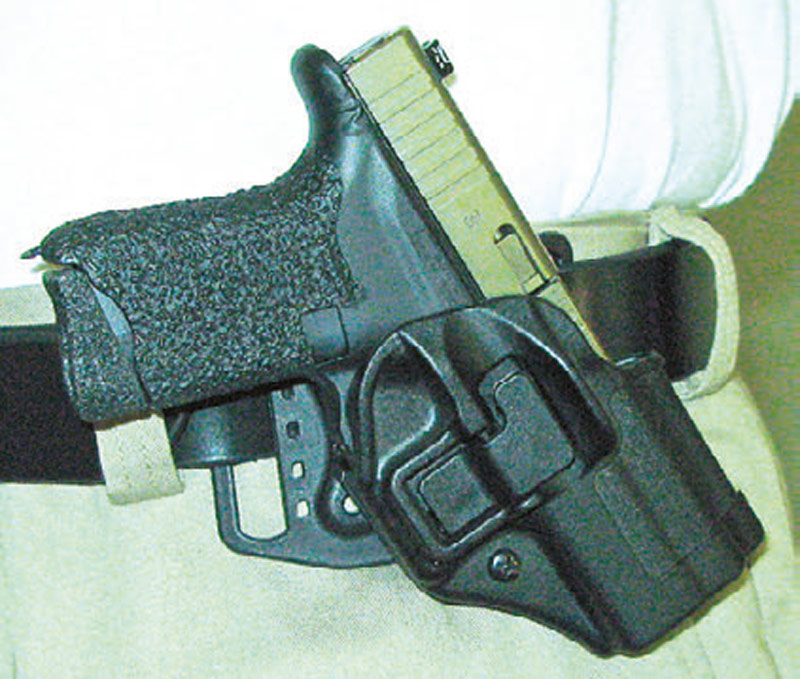
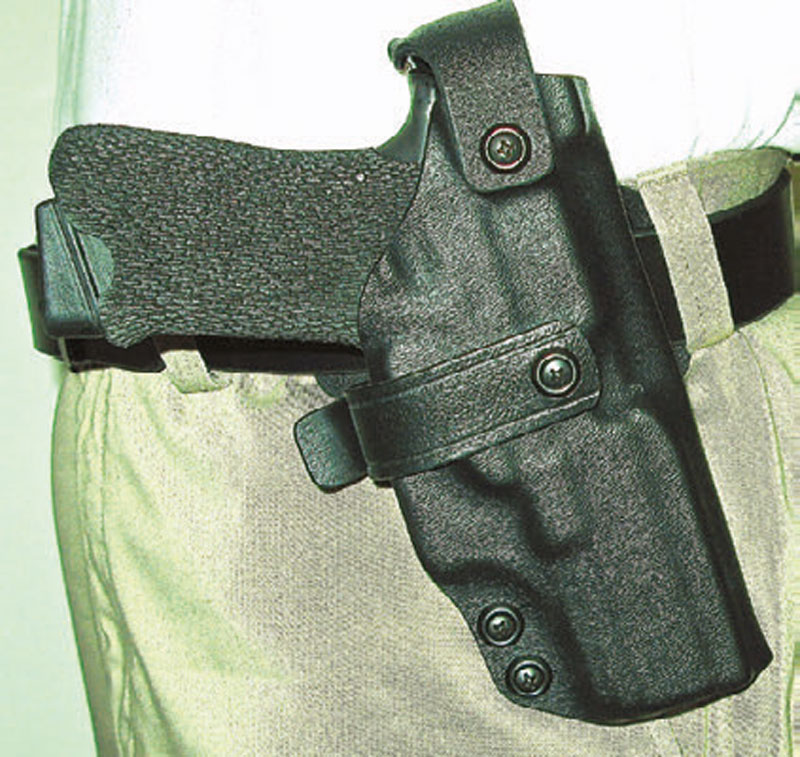
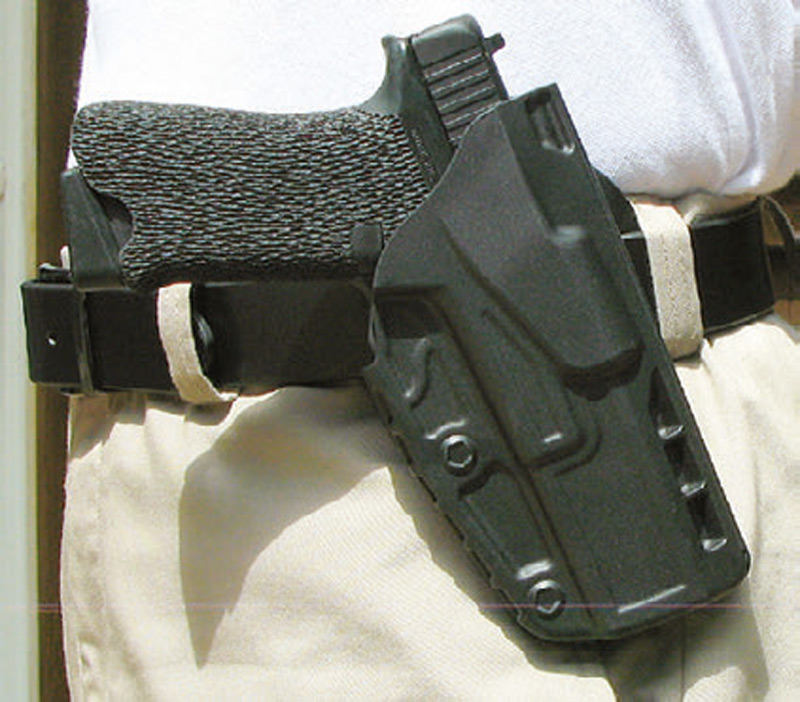
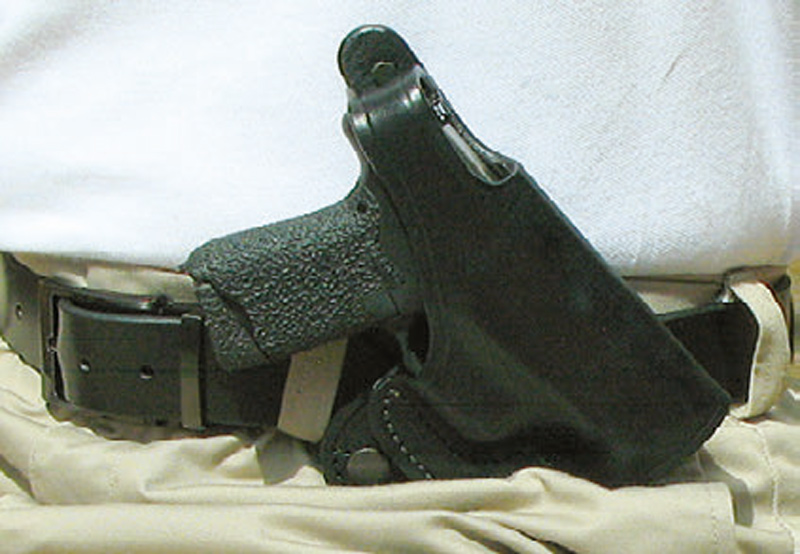
Dara
The John Dara holster house is not well known to me, but its molded Level III scabbard is constructed of first-rate .093-inch Boltaron/Kydex synthetics. It has limitless adjustments for draw angle and retention tension, making it one of the most flexible systems on the market. Hardware is Melonite-finished hardened steel. Consequently, the Dara is rust- and impact-proof and guaranteed for a lifetime.
Hogue PowerSpeed
Constructed of aerospace polymer, the 6.8-ounce PowerSpeed features a large thumb-deactivated automatic retention lock that is intuitive and is situated between the gun and body. Draw angle is completely adjustable and, with spacers for creating space between the body and rig, it is well suited for CD. It comes with paddle and belt mounts. A shoulder rig and MOLLE adapter are available as options. Texture is plain or carbon fiber.
Safariland
Safariland’s new Model 7378 7TS with ALS (Auto Lock System) has been adopted by the FBI for special agents. Firearms instructors praise saving substantial training time with its intuitive thumb release that also requires zero break-in time. The 7378 is constructed of SafariSeven non-marking nylon blend and features internal non-finishmarring stand-offs that allow dirt and moisture to clear quickly and facilitate smooth release of the gun. If more angle or cant is desired, the belt mount can be turned upside down for more extensive adjustments.
CONCLUSIONS
CD is not for everyone but will assist one in being more responsive tactically in certain situations and operational environments. Physiologically, personnel with shoulder problems or very tight shoulders resulting from aging or strenuous work can better access their sidearm via CD. With the newer security holsters, gun takeaway has been substantially mitigated. Draw speed from a covering jacket can be cut in half from a foldedarms position. CD is worth exploring even if your preference is strong side.
FOUR CHAMPIONS ON CROSSDRAW
In the early days of USPA/IPSC competition, Crossdraw was the preferred position for the holster and handgun. I interviewed four champions of that era and they had this to say about the much-maligned crossdraw:
MASSAD AYOOB
Massad Ayoob, director of his Lethal Force Institute and author of many books and countless articles on weapons, self-defense and use-of-force legal matters, carried strong-side and Crossdraw depending on the type of competition—and he competed in just about everything on the circuit. The last time he used CD in a major competition was during the 1989 Bianchi Cup. CD preference was dictated by economy of motion.
Early matches often required the surrender (hands up) or interview stances (hands together at sternum level) to start festivities. In those locations, the fastest way to the gun was CD. Hands at sides favored strong-side carry and preference for that start position phased out CD more than anything else. In Ayoob’s Gun Digest Book of Concealed Carry (Second Edition), he covers the art of CD extensively.
MIKE DALTON
Mike Dalton of Steel Challenge fame was a member of the 1976 Columbia Conference, which founded USPA/IPSC competition. He advised three start positions were adopted: hands at sides, surrender, and interview. He advised that CD can still be used in IPSC, though it is rarely seen today. As far as speed is concerned, he gives the edge to strong-side carry, but they are only separated by about .500th of a second.
When he shoots Bianchi Cup, he uses CD because it is more natural for him to access when he goes prone and shoots around barricades. If you have to present from concealment, like in IDPA competition, he prefers strong-side carry, and the new holster designs seem to favor dominant-side draws. He frequently switched from one style of carry to the other without any confusion.
Competitors often looked at the holstered gun rather than the target before drawing. Mike recalls that Ray Chapman of the Chapman Academy, the first IPSC World Champion, was one of the first to adopt CD, which lent itself to his favored Weaver Stance. When bladed to the target, the gun was exposed to the threat but could be rocked out of the holster and with little movement brought to bear while blocking or distracting with the support arm and hand.
MICKEY FOWLER
Mickey Fowler and Dalton are close friends and spent hours together shooting, analyzing and refining their techniques. Fowler also favored CD for the same reasons mentioned above and advised that the interview position actually preceded the surrender position. Furthermore, some matches allowed the shooter to have his hands hovering over the gun. Fowler continues to hunt on his ranch and carries his heavy-caliber revolver on his left hip. The biggest problem when “smoking” a CD was swinging past or oversweeping your target, because the gun’s muzzle was not being driven straight to target.
JOHN SHAW
John Shaw, owner of and former chief instructor at the famous Mid-South Institute of Self-Defense Shooting, was expert at CD and won countless matches, including the Steel Challenge, SOF combat shoot, two IPSC Nationals, and second in the 1983 World IPSC contest. John later transitioned to Cowboy shooting and won the Cowboy Nationals in 1999 with a two-gun rig.
Initially, he drew his first Peacemaker from his CD holster, emptied it with a two-handed grip, shifted it to his left hand, and reholstered it while drawing his strong-side Colt with his right hand. In regard to CD dominance, he agrees with his fellow competitors. It was simply a matter of economy of motion. At Mid-South’s beginnings, John taught student competitors the offside draw, but focused on strong-side carry soon after that. He never carried CD concealed with his pistol and estimates he picked up a tenth of a second in speed when he switched to strong-side carry.
